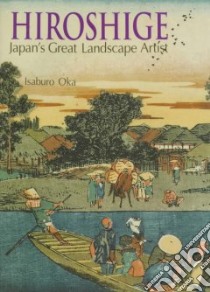Hiroshige - 9784770021212
Un libro in lingua di Isaburo Oka Jones Stanleigh H. (TRN) edito da Kodansha Amer Inc, 1997
- € 20.00
- Il prezzo è variabile in funzione del cambio della valuta d’origine
The last great master of the Japanese woodblock was Utagawa Hiroshige (1797-1858). In the Japan of his day, Hiroshige's landscape prints fostered a new and far-reaching appreciation for nature in art. In the West, his work influenced such artists as Whistler, Cezanne, and Gauguin.
Born in the shogun's capital of Edo (now Tokyo), Hiroshige lost his parents at a young age. Even so, he relinquished the security of his hereditary position as fire warden, and soon after began to study the art of the woodblock print (ukiyo-e) under Utagawa Toyohiro. Some seven or eight years later the maturing Hiroshige made his debut with an impressive set of illustrations for a volume of comic verses. Over the next twelve years or so, he went on to produce prints of Kabuki actors, historical figures, and beautiful women.
The first work to demonstrate Hiroshige's genius in landscape was a series of ten prints on famous scenic spots in Edo, which was produced around 1831. The following year the artist managed to join an official procession to Kyoto, and in his travels along the great thoroughfare between Edo and Kyoto known as the Tokaido he found inspiration for his first masterpiece. The resultant series, "Fifty-three Stages of the Tokaido," secured his position as a landscape artist and provided him with the calling that was to occupy the rest of his life.
Hiroshige's work not only altered the Japanese conception of nature and influenced painters the world over, but earned him a place among the great artists of the world. Hiroshige documents the mastery of this revered artist and presents his most famous prints in a large, deluxe format that makes abundantly clear Hiroshige's prodigious talent.
Informazioni bibliografiche
- Titolo del Libro in lingua: Hiroshige
- Sottotitolo: Japan's Great Landscape Artist
- Lingua: English
- Autori : Isaburo Oka Jones Stanleigh H. (TRN)
- Editore: Kodansha Amer Inc
- Collana: Kodansha Amer Inc (Paperback)
- Data di Pubblicazione: 31 Maggio '97
- Genere: GARDENING
- Dimensioni mm: 304 x 228 x 12
- ISBN-10: 4770021216
- EAN-13: 9784770021212


